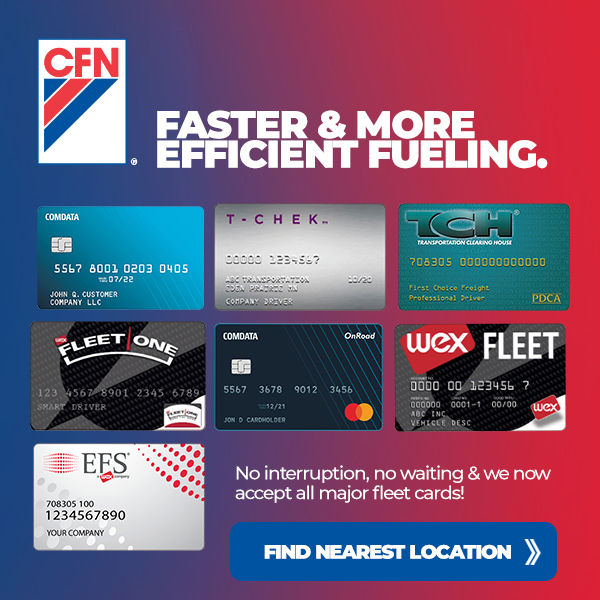
By Ed Pierce, Fleet Management Weekly’s Brand Acceleration
April 3, 2024
Chief Marketing Officers (CMOs) face many unique challenges when marketing fleet products and services. Here, we explore some of the key issues reported by CMOs while offering insights into strategies to help them adapt and thrive in this increasingly competitive field.
Marketing fleet products and services is an ever-evolving field that necessitates constant adjustment based on industry, company size, and market conditions. Chief Marketing Officers are essential in overseeing this dynamic environment and meeting any challenges head-on.
Lead Generation
 Generating high-quality leads remains a top priority for fleet industry CMOs. The challenge lies in effectively identifying, attracting, and engaging potential clients.
Generating high-quality leads remains a top priority for fleet industry CMOs. The challenge lies in effectively identifying, attracting, and engaging potential clients.
Here are some innovative tools used by providers that may help overcome this hurdle:
Account-Based Marketing (ABM)
Account-Based Marketing is an increasingly popular approach to B2B marketing, harnessing cutting-edge AI-powered tools and robust data analysis to pinpoint and prioritize a business’s most pertinent accounts precisely.
Diving deep into their data, ABM allows marketers to move beyond broad audience segments and target potential customers who best fit the company’s ideal client profile. This level of precision provides marketers with a significant competitive edge over traditional marketing tactics by channeling resources and efforts towards accounts more likely to convert and have higher lifetime values, thus optimizing return on investment from marketing campaigns.
ABM stands out from traditional marketing because it delivers highly tailored experiences to individual accounts identified. By continuously analyzing data with AI algorithms, ABM allows us to understand better each target account’s individual pain points, preferences, and needs.
Engaging Content
By harnessing this data, marketers can craft custom messages and offers that resonate deeply with these accounts, strengthening brand engagement and increasing conversion rates. Through personalization techniques such as exclusive offers for target accounts, ABM allows businesses to establish meaningful relationships with prospective customers that build trust while opening doors to long-term customer partnerships.
Intent Data Analysis
Fleet marketers today depend heavily on intent data analysis as an essential strategy. This technique involves tracking and analyzing customers’ online behaviors and signals so fleet marketers can accurately discern potential buyers’ purchase intentions and needs. Marketers can detect when prospects are researching fleet solutions by monitoring search queries, website visits, content consumption patterns, and social media engagement activity.
 Real-time insight into customer intent allows fleet marketers to strike while the iron is hot, reaching out with timely and relevant messaging, offers, or solutions. This ultimately increases conversion likelihood and provides significant competitive advantages in an industry as fast-moving as fleet management.
Real-time insight into customer intent allows fleet marketers to strike while the iron is hot, reaching out with timely and relevant messaging, offers, or solutions. This ultimately increases conversion likelihood and provides significant competitive advantages in an industry as fast-moving as fleet management.
Conversational Marketing and Chatbots
These tools aim to deliver personalized and engaging customer experiences by responding quickly to inquiries, addressing concerns, and leading customers through the purchasing journey.
Chatbots powered by AI and machine learning provide instant answers and can qualify leads by assessing their interest and readiness to make a decision. They can also efficiently schedule meetings or appointments, making the experience seamless and convenient for both parties involved. By keeping conversations going with prospects engaged for long enough periods, chatbots foster relationships while simultaneously increasing lead conversion rates.
LinkedIn and Social Selling
LinkedIn remains an effective platform for fleet product and service provider lead generation. Businesses use social networks like LinkedIn to share relevant content, discuss with prospective leads, and connect directly with them.
 Predictive Analytics powered by machine learning has revolutionized lead generation and management. Utilizing historical data and various variables, this advanced technology uses historical trends and multiple variables to predict which leads will most likely become customers accurately.
Predictive Analytics powered by machine learning has revolutionized lead generation and management. Utilizing historical data and various variables, this advanced technology uses historical trends and multiple variables to predict which leads will most likely become customers accurately.
Predictive analytics algorithms use past customer behaviors, interactions, and conversion patterns to assign each prospect a lead score that indicates their potential value and readiness to purchase. This feature enables sales and marketing teams to focus their resources and efforts on nurturing only those most promising leads for more efficient lead nurturing processes.
Predictive analytics has become an indispensable asset for businesses that aim to outpace competitors while making data-driven decisions to promote sustainable growth. By quickly recognizing high-converting leads early in the sales funnel, businesses can increase the chances of conversions and optimize overall marketing strategies for more significant ROI. It allows businesses to increase conversions while optimizing overall strategies with a higher return.
AI-Powered Lead Scoring
AI-powered lead scoring dramatically transforms how businesses assess and prioritize leads in their sales pipelines. Lead scoring becomes an efficient and accurate process by harnessing artificial intelligence’s capabilities.
 AI algorithms monitor leads’ interactions with digital assets owned by companies – websites, emails, and social media accounts, for example – enabling sales teams to monitor a lead’s level of engagement, interest, and intent in real time and focus their time and resources on those with the highest conversion potential.
AI algorithms monitor leads’ interactions with digital assets owned by companies – websites, emails, and social media accounts, for example – enabling sales teams to monitor a lead’s level of engagement, interest, and intent in real time and focus their time and resources on those with the highest conversion potential.
AI-powered lead scoring improves efficiency and ensures sales and marketing teams work together to nurture leads most likely to contribute to company growth while providing personalized experiences for leads. This level of precision and automation significantly increases lead conversion rates and strengthens the overall effectiveness of a sales process.
Interactive Content
Interactive content has emerged as a potent weapon in modern marketing strategies, providing an engaging way for businesses and marketers to connect with prospects. Formats like quizzes, assessments, and calculators go beyond static forms by engaging audiences directly within the content experience.
Interactive elements enable businesses to engage their target audiences and gain invaluable insights into their preferences, pain points, and needs. By encouraging prospects to participate in quizzes or assessments related to their industry or challenges, marketers can collect data that enables them to tailor future content offerings more precisely.
 Interactive content allows for immediate feedback, enabling marketers to nurture leads with personalized follow-up based on responses provided. This ultimately deepens engagement and trust between potential customers and marketers.
Interactive content allows for immediate feedback, enabling marketers to nurture leads with personalized follow-up based on responses provided. This ultimately deepens engagement and trust between potential customers and marketers.
Interactive content has quickly become essential in modern lead generation strategies, increasing prospect engagement while broadening audience understanding.
Content Personalization
Content personalization goes beyond using a prospect’s name in an email; it involves tailoring content specifically to their interests and needs to increase engagement and conversion rates.
Voice Search Optimization
As voice-activated devices become more widespread, optimizing content for voice search becomes an integral component of marketing to fleet product and service providers. They must take into account how prospective buyers might utilize voice search to find relevant products or services.
Virtual and Hybrid Events
As business dynamics shift, virtual and hybrid events are growing more popular as a response. They allow companies to reach a global audience more cost-effectively while engaging with leads generated during these virtual meetings.
Establishing the Return on Investment
 Determining the return on investment for fleet marketing initiatives is of utmost importance, as sales cycles can often be long and intricate, making accurate revenue tracking difficult.
Determining the return on investment for fleet marketing initiatives is of utmost importance, as sales cycles can often be long and intricate, making accurate revenue tracking difficult.
Data analytics are an integral component of fleet product and service provider marketing, serving to demonstrate return on investment (ROI). They involve collecting, analyzing, and interpreting data to gain actionable insights into marketing performance.
Here is how a marketing team can leverage data analytics to demonstrate its return on investment:
Tracking Key Metrics
Marketers looking to assess the results of their marketing initiatives need to identify and monitor key performance indicators (KPIs). Such indicators include website traffic, lead generation, conversion rates, revenue generated, and more. By closely following KPIs, marketers can gain an accurate assessment of their campaigns and strategies’ efficacy.
Marketing Automation Platforms
Marketing automation platforms allow marketers to track lead behavior, engagement with content, and conversion paths more accurately while also connecting to customer relationship management (CRM) systems for optimal ROI measurement.
Adapting to Change
 Fleet industry CMOs face numerous and ever-evolving challenges. Successful CMOs adapt to these difficulties by staying informed on industry trends and using innovative solutions to drive growth and customer engagement.
Fleet industry CMOs face numerous and ever-evolving challenges. Successful CMOs adapt to these difficulties by staying informed on industry trends and using innovative solutions to drive growth and customer engagement.
CMOs can successfully navigate the complex world of fleet industry marketing by adopting data-driven strategies, aligning with sales teams, and prioritizing differentiation – three essential ingredients of success in fleet industry marketing.
Fleet Management Weekly’s Brand Acceleration fleet marketing consultant, Ed Pierce, can offer fleet product and service provider CMOs insight on overcoming challenges with no cost or obligation incurred from his consultation services. Please call him at (484) 957-1246 or email him directly at [email protected] for more details.




